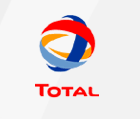
 Within the 1st CAPE-OPEN US Conference, on August 23, 2004, Michel PONS (TOTAL) gives a presentation (PDF, 4455 Kbytes) where he lists a number of CAPE-OPEN compliant software components developed by commercial software vendors, academic organizations or as in-house software by end-user organizations. This presentation serves as an introduction to several subsequent presentations by most of the organizations cited in the list.
Within the 1st CAPE-OPEN US Conference, on August 23, 2004, Michel PONS (TOTAL) gives a presentation (PDF, 4455 Kbytes) where he lists a number of CAPE-OPEN compliant software components developed by commercial software vendors, academic organizations or as in-house software by end-user organizations. This presentation serves as an introduction to several subsequent presentations by most of the organizations cited in the list.
The driving force behind the adoption of the CAPE-OPEN standards is to meet industrial needs. Michel begins by mentioning Aspen Tech / Hyprotech components which derive directly from the involvement of both AspenTech and Hyprotech in the CAPE-OPEN project. A CAPE-OPEN Property Package can be exported from Aspen Properties. An example is provided and it is shown how the compounds, the properties and the phases supported by the Property Package are displayed.
Then Michel points to SimSci-Esscor which will soon release PRO/II 7.0 which will display compliance with both CAPE-OPEN thermodynamic interfaces and CAPE-OPEN Unit Operation interfaces. It is then shown how the CAPE-OPEN Property Package exported from Aspen Properties can be instantiated and used through CAPE-OPEN in PRO/II.
RSI, a subsidiary company from IFP, is mentioned next for its WellCoMon application: given measured pressures and temperatures, WellCoMon simulates the whole production network, from reservoir to process facilities. WellCoMon complies with the CAPE-OPEN standard. RSI’ s Process Modelling Environment, INDISS, while aimed at Operator Training applications, and hence a dynamic process simulator, incorporates a CAPE-OPEN Thermodynamic socket. RSI is understandably involved in the specification of CAPE-OPEN interfaces for dynamic unit operations.
Process Systems Enterprise Ltd., a spin-off from the Centre for Process Systems Engineering at Imperial College, London, features a CAPE-OPEN Thermodynamic socket in their advanced modelling tool gPROMS and allows for a gPROMS unit operation to be encapsulated as a CAPE-OPEN Unit Operation. With this encapsulation, it is possible to plug advanced unit operation models, developed in gPROMS, into process simulators like Aspen Plus or Hysys, relying on thermodynamic consistency throughout the model development and exercize.
Next MultiFlash from Infochem Computer Services Ltd. is mentioned as a software combining a comprehensive phase behaviour package with enhanced industry-standard fluid models. MultiFlash DLL has been encapsulated as a CAPE-OPEN Thermo System capable of delivering CAPE-OPEN Property Packages to any CAPE-OPEN Process Modelling Environment. An example is given of a MultiFlash Property Package running in Hysys.
Then Michel PONS mentions Heat Transfer Research Inc. (HTRI), an international consortium conducting research on industrial-scale heat transfer equipment and developing software modeling and simulation tools based on this proprietary research data. HTRI announces that the shell and tube heat exchanger module (Xist) in their XChanger Suite has been made a CAPE-OPEN Unit Operation and tested in Hysys. The objective is to provide air-coolers, economizers, and plate and frame exchangers modules as well. A flowsheet is shown demonstrating the insertion of Xist in Hysys.
Next Michel speaks of Simulis Thermodynamics from ProSim SA. Simulis Thermodynamics is a new software component that allows for the creation and deployment of Simulis® Thermodynamics Packages (CAPE-OPEN compliant). It also offers a CAPE OPEN compliant thermodynamic socket for external property packages.
To end with the list of commercial CAPE-OPEN components, Fluent is mentioned. Within a DOE sponsored project, AspenTech and Fluent have worked together to integrate, trhough CAPE-OPEN, CFD-fidelity equipment models in the context of the AspenTech’s overall process models.
Michel moves next to components developed within end-user organizations. One is Shell CO-SPPTS which is a thermodynamic server exercizing specific fluid models that is useable in several different Process Modelling Environments. At IFP, a Butane isomerization reactor model has been encapsulated as a CAPE-OPEN Unit Operation and used within Hysys. Some screenshots of the Graphical User Interface of that Unit Operation are shown.
With CAPE-OPEN the point is also to make easily available results from academic research. One example are the CAPE-OPEN numerical components developed at Institut National Polytechnique de Toulouse, building on their work in the Numerical Work Package of the CAPE-OPEN project. Another one is the thermodynamic server developed at IVC-SEP within Denmark Technical University. As a CAPE-OPEN software component, it is made available to the consortium industrial members to let them use the Cubic Plus Association (CPA) Equation of State that IVC-SEP has developed. It is shown that this thermodynamic server can be plugged in Aspen Plus.
Michel PONS concludes by stating that more CAPE-OPEN software components are necessary in order to truly propose alternatives. Equipment vendors should take a look at CAPE-OPEN and propose their models as CAPE-OPEN Unit Operations. More CAPE-OPEN components are needed but the trend is there to produce more and more.
